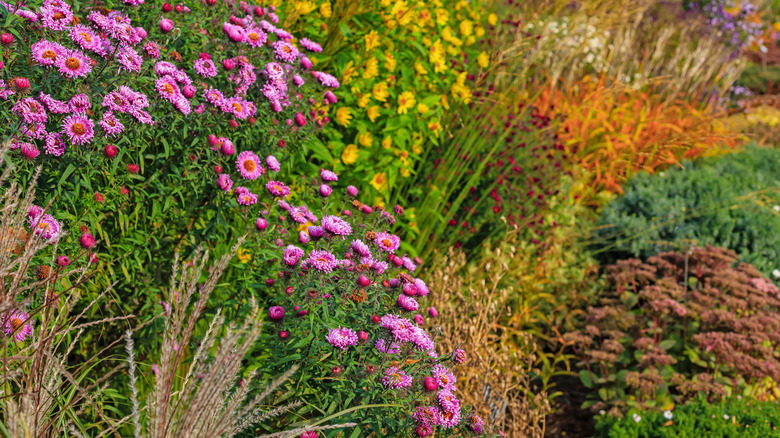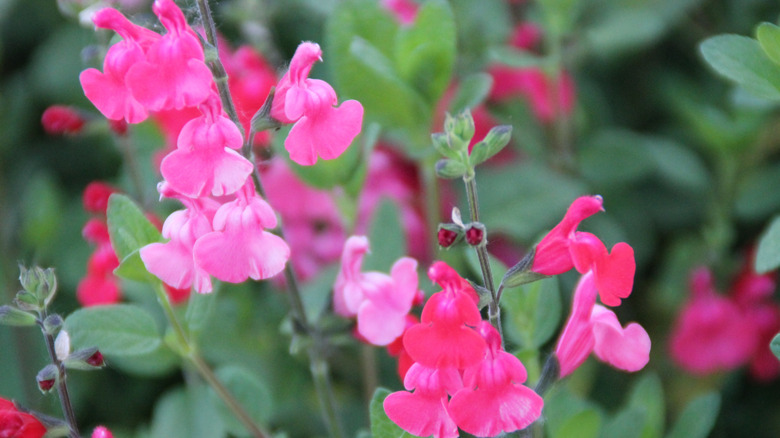The Perennial You Should Plant In August For Gorgeous Blooms That Last Through Autumn
August may feel too hot for gardening, but it might be your last chance to add perennials to your flower garden for fall blooms. Gardeners with mild winters and dry growing conditions should consider planting autumn sage (Salvia greggii), a plant that supplies eye-catching flowers that last throughout the growing season. Also known as cherry, Gregg, red Chihuahuan, or Texas sage, this is one of those perennials that will bloom every autumn — but also through spring and summer.
A low-maintenance plant that it isn't bothered by pests or diseases and doesn't need fertilizer, autumn sage is a small shrub that bears outstanding blooms. This ornamental sage is native to Texas and northeast Mexico, where it's adapted to dry growing conditions. With tubular, lipped blooms in shades of purple, pink, red, orange, or white, this gorgeous ornamental sage is highly attractive to pollinators such as bees and hummingbirds. This drought-tolerant plant has evergreen or semi-evergreen foliage, depending on the climate, and usually reaches 2 to 3 feet in width and height, occasionally growing as tall as 5 feet. Gardeners can plant this sage as a perennial in the right locations even in the month of August.
How to plant autumn sage for beautiful fall blooms
Autumn sage comes back year after year in USDA Hardiness Zones 6 to 9, where it shows off its gorgeous flowers in either full sun or part shade in well-draining soil. It thrives in rocky soils and is well adapted to dry conditions once established. This is one of those heat tolerant perennials that can handle the hottest summer days — but only after it has had time to establish itself in its new location.
If it's still hot in August in your location, choose an overcast day or wait until late evening after the sun has gone down and conditions are cooler to transplant. To keep newly transplanted autumn sage plants alive in hot weather, water frequently to help the plants get established — potentially every day until temperatures cool, if rainfall is absent. By planting in August, you give the plants' roots enough time to mature before fall triggers dormancy.
Autumn sage can be included in borders, butterfly gardens, or rock gardens, where these plants will be loaded with beautiful blooms that last through fall. To encourage re-blooming throughout the growing season, simply deadhead spent blooms. Once you have planted and tended to autumn sage in your flower bed, follow these other tips and tricks to keep your perennial garden looking fresh in August, such as refreshing for the season ahead.

